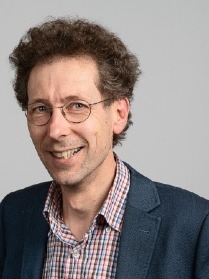prof. dr. ir. A.J. (Adriaan J) Minnaard

Research interests
The group of Minnaard is active in organic chemistry, specifically in organic synthesis, focussing on the ability to chemically prepare complex molecules, based on in-house developed catalysis methodology. Parts of his work are carried out in close collaboration with other groups in chemistry (Codée, Bickelhaupt), biology (Gilleron, CNRS Toulouse, and Yamasaki, Osaka University), and medicine (Moody, Harvard Med School, Seshadri, U. Washington).
By working together with leading groups in tuberculosis research, the group makes fundamental discoveries in the immunology of this disease and unravels how tuberculosis bacteria survive in macrophages. The research spans the entire chain from fundamental science to novel diagnostics and antibiotics to combat TB. The fundamental research is funded by NWO, and the NIH. The more applied research is funded by the Gates Foundation and industry. With the planned launch of a novel diagnostic test for TB worldwide by Minnaard’s initiated UG spin-off company, its mission is on its way to being accomplished.
With the development of highly selective catalysis recently also in photoredox catalysis and electrosynthesis, Minnaard’s group has joined the new and rapidly growing community that studies the selective modification of complex molecules. Minnaard holds the world record in selective oxidation of hydroxyl groups (one out of 27 hydroxyl groups in the molecule) and has recently demonstrated the selective modification of currently used aminoglycoside antibiotics (in just 2 steps!) in such a way that bacterial resistance is circumvented. This novel synthesis methodology is also the basis for the total synthesis of extremely complex molecules, in particular complex glycolipids. By showing that these compounds can be chemically prepared, the field is pushed forward.
Four years ago, the Minnaard group was the first worldwide to show that photoredox catalysis can be applied successfully on unprotected carbohydrates (2018), and this year (2022) they renewed this claim for electrochemical oxidation of secondary alcohols in unprotected carbohydrates. These findings catch significant attention, and boosts the application of carbohydrates as renewable starting materials (in the context of ARC-CBBC). The group applies readily available carbohydrates as renewable starting materials for the pharma and coating industry.
